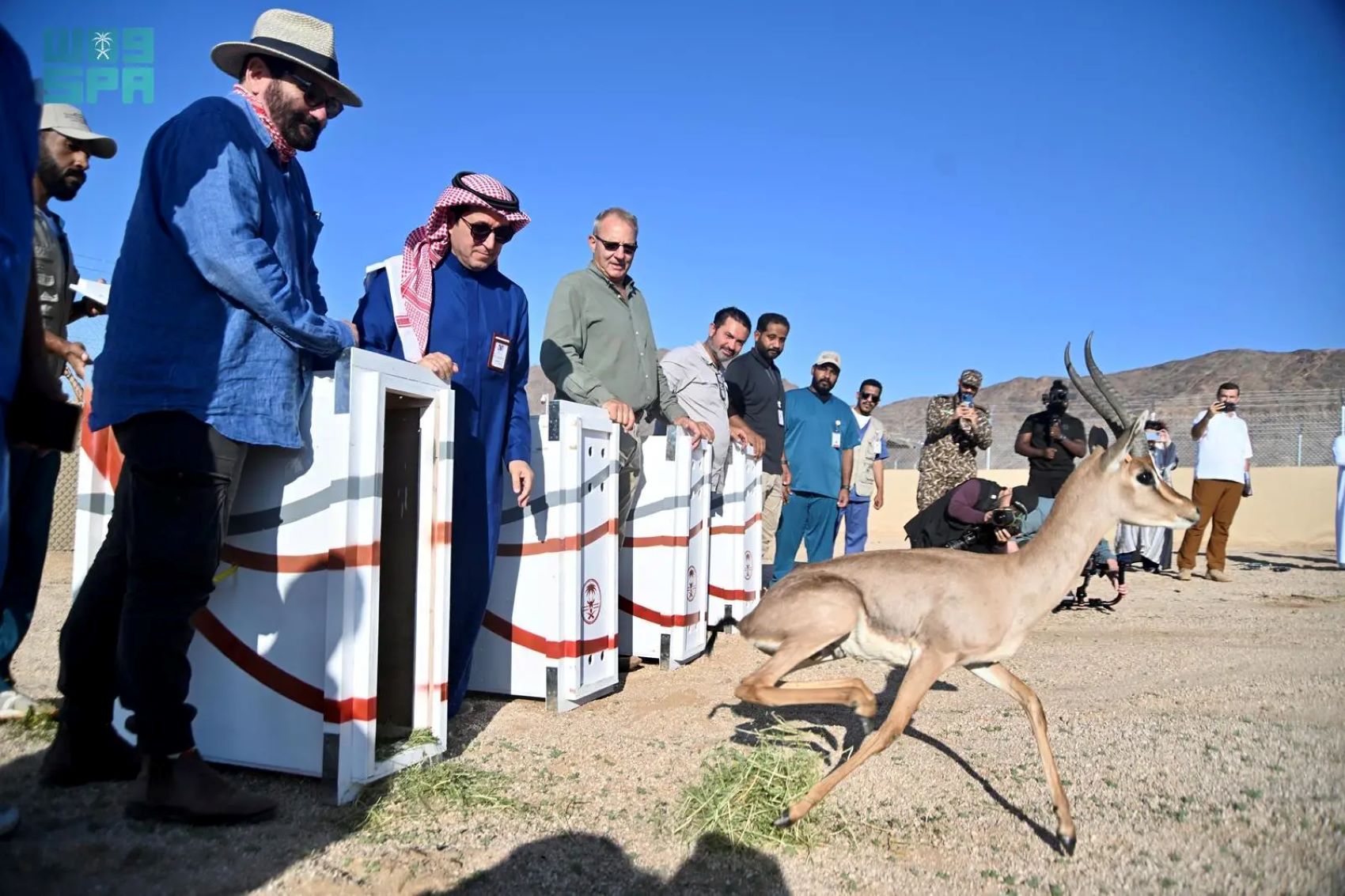RIYADH, SAUDI ARABIA – The National Center for Wildlife, in cooperation with the Prince Mohammed bin Salman Royal Reserve released 85 endangered animals, the first batch in the 2023-2024 season.
The release is part of the center’s program with increasing and relocating endangered wild animals, restructuring ecosystems, and enriching the biodiversity in Saudi Arabia.
The animals released on Sunday are 20 Arabian oryx, 40 rim antelopes, six mountain gazelles, six alpine ibexes.
Birds rehabilitated in the shelter include four steppe eagles, four griffon vultures, one lappet-faced vulture, and four pharaoh eagle-owls.
The release was made possible by the many cooperation programs between the reserve and the center to rehabilitate the reserve’s ecosystems, enrich biodiversity and achieve national targets.
National Center for Wildlife CEO Dr. Muhammed Qurban said that the release program aims mainly at returning endangered indigenous species to their natural habitats.
He said that this is one of the programs of the Saudi Green Initiative, carried out in the implementation of the National Environment Strategy in order to achieve sustainable development, wildlife growth and biodiversity, and which is in line with global environmental conservation efforts.
It is also a step that underlines the depth of cooperation between the center and national stakeholders with mutual interest.
Qurban added that the center owns facilities specializing in the reproduction and localization of endangered organisms in their natural habitats, as per the most accurate global standards.
It carries out research on their living conditions, follows up and monitors biodiversity in protected areas using modern techniques to track wildlife group, collects data and understands the risks incurred by wildlife.








